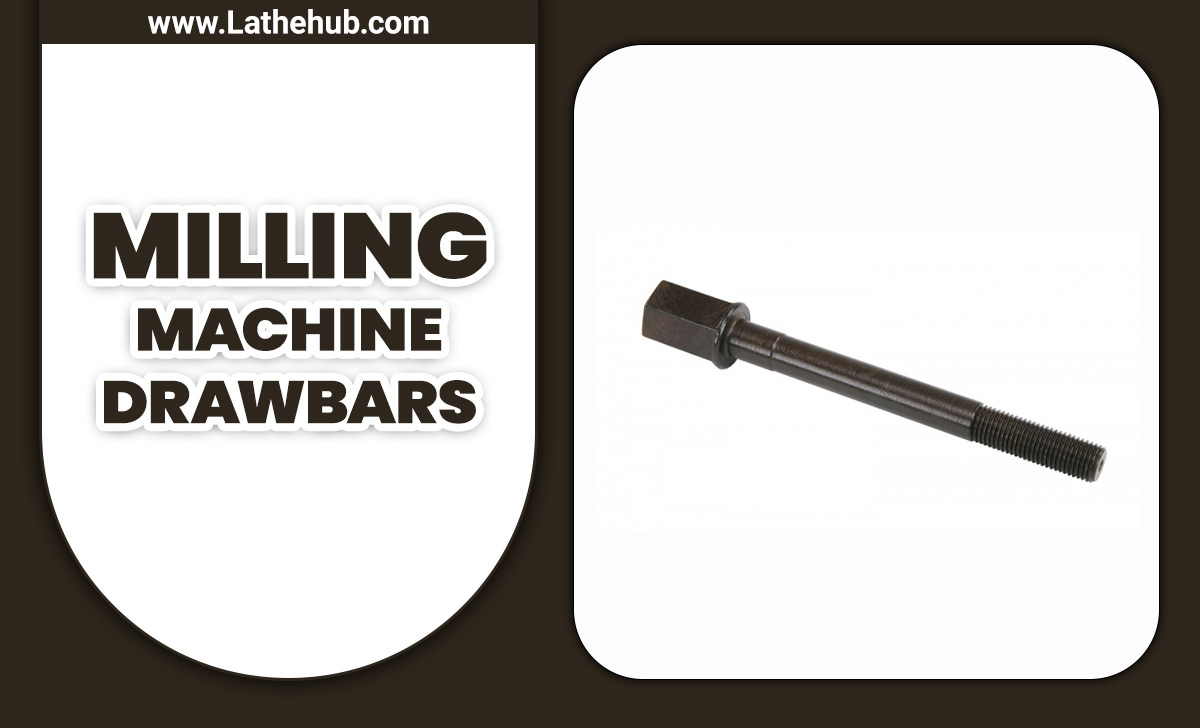Get precise plywood cuts with a 3/16 inch carbide end mill. This guide shows how, focusing on reduced neck designs for minimized deflection, ensuring clean edges and easy control for your projects. Learn to master this essential tool for superior woodworking results.
Working with plywood can sometimes feel like wrestling a stubborn beast. You want smooth, clean cuts, but often get fuzzy edges, splintering, or unwelcome deflection that throws off your measurements. It’s a common frustration for DIYers and hobbyists alike. But what if there was a way to achieve much better control and cleaner results? The secret often lies in choosing the right tool for the job, and for plywood, a specific type of end mill can be a game-changer.
We’re going to dive deep into how a 3/16 inch carbide end mill, especially one with a reduced neck, can be your best friend for tackling plywood. We’ll break down exactly why this tool is so effective, what to look for when buying one, and how to use it safely and efficiently for fantastic results, every single time. Get ready to say goodbye to plywood cutting headaches!
Why This Specific End Mill is a Plywood Powerhouse
Plywood, with its layered construction of wood veneers glued together, presents unique challenges for cutting tools. The grain directions change across the plies, and the glue layers can be tough on edges. This is where the 3/16 inch carbide end mill, particularly a reduced neck variant, shines.
Understanding the Basics: Carbide vs. High-Speed Steel (HSS)
When you’re cutting materials like plywood, especially on a CNC router or milling machine, the tool material makes a big difference.
Carbide: Made from tungsten carbide, this material is incredibly hard and wear-resistant. This means it stays sharper for longer, handles heat better, and cuts through tough materials like plywood more cleanly and consistently than HSS. For plywood, the sharpness retention is key to preventing tear-out.
High-Speed Steel (HSS): Softer than carbide, HSS tools can dull more quickly, especially in abrasive materials or when generating significant heat. While they can work, they often require more frequent sharpening and might not produce the same pristine edge quality on plywood.
For plywood, the superior hardness and edge retention of carbide make it the clear winner.
The Magic of 3/16 Inch Diameter
The 3/16 inch (approximately 4.76mm) diameter is a sweet spot for many woodworking tasks, especially with plywood.
Maneuverability: This smaller diameter allows for intricate details and sharp internal corners that larger bits can’t achieve.
Strength-to-Size Ratio: For its size, a 3/16 inch end mill made of carbide is robust enough for most plywood cutting tasks, provided it’s used correctly.
Commonry: It’s a size commonly used in many CNC projects and handheld routers, making it readily available and versatile.
The “Reduced Neck” Advantage
This is often the secret sauce for superior plywood cutting. A reduced neck end mill has a portion of the shank (the part that would normally be the same diameter as the cutting flutes) machined down to a smaller diameter, closer to the actual length of the flutes.
Minimizing Deflection: The main benefit of a reduced neck is that it significantly reduces the lever arm for any forces trying to bend the tool. When cutting, especially on thin materials like plywood or when taking deeper cuts, the tool can flex. A standard end mill with a full-diameter shank extending far up the flute length is prone to more deflection. The reduced neck design shortens this effective length, making the tool much stiffer and less likely to deflect. This leads to straighter walls and more accurate cuts.
The physics behind this relate to the beam bending formula. A shorter, narrower beam is much stiffer than a longer, wider one under the same load. Though an end mill shank isn’t a simple beam, the principle holds: a reduced neck dramatically increases rigidity.
Preventing Chatter: Deflection can also lead to chatter – a vibration that results in a rough, wavy surface finish. By minimizing deflection, the reduced neck design helps achieve a smoother finish.
Better Chip Clearance: In some designs, a reduced neck can also improve chip evacuation, allowing the flutes to clear away sawdust more effectively. This keeps the cutting area clean, reduces heat buildup, and further aids in achieving good cuts.
For plywood, where consistent depth and clean edges are paramount, a 3/16 inch carbide end mill with a reduced neck offers unparalleled control.
What to Look For When Buying Your 3/16 Inch Carbide End Mill
Not all 3/16 inch carbide end mills are created equal. To get the best performance, especially for plywood, consider these features:
Shank Diameter and Type
While we’re focusing on reduced neck, it’s important to know that the final shank size (often 8mm or 1/4 inch for this diameter) will affect what collet or holder you need for your machine. Ensure the shank type matches your collet system.
Number of Flutes
The number of cutting edges (flutes) on an end mill affects chip load and finish.
2 Flute: Generally better for softer materials and for plunging or slotting. They offer good chip clearance. For plywood, if you’re doing a lot of slotting or pocketing, 2 flutes can be excellent.
3 or 4 Flute: These provide a smoother finish at higher feed rates because the chip load is distributed over more edges. If your priority is a very clean surface finish on the visible parts of your plywood project, 3 or 4 flutes might be preferable, but they can load up chip material more easily if not managed.
For plywood, a 2-flute end mill with a reduced neck is often the sweet spot for balancing cut quality, chip clearance, and minimizing deflection.
Coating
Some end mills come with coatings that enhance their performance. While not always strictly necessary for typical CNC plywood routing, coatings like TiN (Titanium Nitride) or Titanium Aluminum Nitride (TiAlN) can increase hardness, reduce friction, and improve lifespan. For beginners, un-coated carbide is usually sufficient and more cost-effective.
Helix Angle
The helix angle is the angle of the cutting edge as it spirals around the tool.
High Helix (30-45 degrees): These provide a shearing action, which is excellent for cutting cleanly and reducing tear-out in wood materials. They also tend to be quieter.
Low Helix (0-15 degrees): These are more robust for harder materials but not ideal for wood.
For plywood, a high helix angle (around 30 degrees) is generally recommended for the cleanest cuts.
“O-Flute” vs. “Multi-Flute”
You might see terms like “O-flute” or “single-flute” end mills. These are common in woodworking CNC.
Single Flute (O-Flute): These are designed specifically for wood and plastics. They have a large flute volume for excellent chip ejection and a sharp cutting edge for a clean shear. They are very effective for plywood.
Multi-Flute: As mentioned above, these offer a smoother finish if chip evacuation is managed.
When looking for your 3/16 inch carbide end mill for plywood, a single-flute or 2-flute design with a high helix and a reduced neck is your best bet for precision and clean cuts.
Essential Tools and Setup for Success
Before you even turn on your machine, make sure you have the right setup. This ensures safety and helps you get the most out of your carbide end mill.
The Milling Machine or CNC Router
Whether you’re using a dedicated CNC router or a milling machine with a rotary axis or a skilled manual operator, the machine itself needs to be in good condition.
Rigidity: A machine with a rigid frame will minimize vibration and deflection, which works in tandem with your reduced neck end mill.
Collet/Chuck: Ensure you have the correct collet or chuck to hold the 3/16 inch shank securely. Runout (wobble) in your spindle can ruin even the best cuts. A quality collet is crucial.
Dust Collection: Plywood dust can be very fine and also contain glue particles. A good dust collection system is vital for a clean workspace, your health, and to prevent buildup on the tool and material. Check out resources from organizations like the Occupational Safety and Health Administration (OSHA) for best practices in dust control in workshops.
Essential Accessories and Safety Gear
Collets/Chuck: As mentioned, the correct size collet for your 3/16 inch shank and your machine spindle is a must.
Workholding: Securely clamping your plywood is non-negotiable. This could involve sacrificial spoilboards, clamps, or vacuum hold-down systems. Your workpiece must not move during the cut.
Safety Glasses: Carbide bits are brittle. If one fails or a chip breaks off unexpectedly, shards can fly. Always wear safety glasses or a face shield.
Hearing Protection: Milling machines and routers can be loud. Protect your hearing.
Dust Mask/Respirator: Plywood dust is harmful. Use appropriate respiratory protection, especially when dust collection isn’t perfect.
Plywood Material: For practice, use a common type of plywood like birch or pine. Avoid exotic hardwoods until you’re comfortable.
Step-by-Step: Achieving Genius Plywood Control with Your End Mill
Here’s how to put your 3/16 inch carbide end mill to work, focusing on optimized settings and techniques for plywood. These steps are generally applicable whether you’re using a CNC router or a manual milling machine, with adjustments for machine control.
Step 1: Secure Your Plywood and Machine Setup
1. Place Plywood: Lay your plywood sheet on a flat, stable surface. If using a CNC, ensure it’s flat against your spoilboard.
2. Clamp Firmly: Use appropriate workholding methods to rigidly secure the plywood. Ensure clamps won’t interfere with the cutting path of your end mill. For CNC, if you have a larger sheet, consider clamps at multiple points.
3. Test Spindle & Collet: Insert the 3/16 inch end mill into the collet/chuck. Ensure it’s seated correctly and tightened securely. Spin the spindle by hand to check for any obvious wobble.
Step 2: Setting Up Your CAM or Machine Controls (CNC Focus)
If you’re using a CNC, this is where your software (CAM – Computer-Aided Manufacturing) plays a big role.
1. Define Tool: In your CAM software, create a new tool and select “End Mill.
Diameter: 3/16 inch (or 4.76mm)
Flutes: Select the number of flutes (e.g., 1 or 2).
Shank Diameter: Enter the actual shank diameter if different from the cutting diameter (important for collision detection, though less critical for reduced neck in X/Y moves).
Material: Select a material similar to plywood (e.g., Poplar, Pine, or a general wood setting).
2. Define Cutting Parameters: This is CRUCIAL for a good plywood cut.
Spindle Speed (RPM): For 3/16 inch carbide in plywood, a good starting point is often 18,000-24,000 RPM. You may need to adjust based on your machine and the specific plywood.
Feed Rate (XY Feed): This is how fast the tool moves across the material. For a 3/16 inch carbide end mill in plywood, aim for:
Slotting/Pocketing (2-flute): ~30-60 inches per minute (IPM), or 760-1520 mm/min.
Contour Cutting (2-flute): ~40-80 IPM, or 1000-2000 mm/min.
For 3 or 4 flutes, you might increase the feed rate slightly to maintain chip load.
Tip: Always start at the lower end of the recommended feed rate and increase if you’re getting good chip formation and a clean cut. Too fast, and you risk tool breakage or poor finish; too slow, and you can burn the wood.
Plunge Rate (Z Feed): How fast the tool moves down into the material. This should be slower than your XY feed rate. A good starting point is half your XY feed rate, so ~15-30 IPM (380-760 mm/min).
Stepdown (Max Rough Stepdown): The depth of cut per pass for pocketing or roughing. For a 3/16 inch end mill in plywood, a good start is 50% of the tool diameter, so about 0.093 inches (2.38mm). You can often go deeper for plywood, but starting conservatively is wise.
Stepover (Max Finish Stepover): For finishing passes, this is the distance the tool moves sideways between passes. For excellent surface finish, a stepover of 10-20% of the tool diameter (~0.018 to 0.037 inches / 0.45 to 0.95mm) is recommended. For roughing, you might use 50% or more.
3. Generate Toolpaths: Create your desired toolpaths (e.g., pocket, contour, profile). Ensure the “tab” option is enabled for contour cuts if you want to prevent vibration or the piece from falling out too soon.
Step 3: Executing the Cut Safely
1. Load Program: Load your generated G-code into your CNC controller or set up your manual machine for the programmed movement.
2. Zero Z-Axis: Accurately set your Z-zero point. This is usually on the top surface of the plywood or spoilboard.
3. Clear Workspace: Ensure no unexpected objects are in the cutting path and that your dust collection is running.
4. Start the Spindle: Turn on your spindle to the programmed RPM.
5. Initiate Cut: Start the cutting process.
6. Observe and Listen: Pay close attention to the sound and action of the end mill.
A clean, consistent whirring sound is good.
Screeching or high-pitched squealing might indicate the feed rate is too slow, you’re rubbing, or the tool is dull.
Chugging or bogging down suggests the feed rate is too fast, the stepdown is too deep, or the spindle speed is too low.
Look for clean chip formation. You want small, uniform chips, not dust or large, stringy pieces.
7. Emergency Stop: Familiarize yourself with the emergency stop button on your machine. Be ready to use it if anything goes wrong.
8. Monitor Tool Wear: For carbide, wear is usually gradual. If you notice a significant degradation in cut quality, it’s time to consider a new bit or professional sharpening.
Step 4: Post-Cut Inspection and Refinement
1. Cool Down: Allow the end mill and workpiece to cool slightly.
2. Remove Workholding: Carefully remove clamps or other workholding devices.
3. Inspect Cuts: Examine the edges of your cuts.
Cleanliness: Are the edges smooth and free of fuzzies or tear-out?
Accuracy: Are the dimensions correct?
Squareness: Are the walls of the cut perpendicular to the surface (thanks to reduced deflection)?
4. Break Tabs: If you used tabs, carefully break or cut them to free your piece. A sharp chisel or utility knife often works well.
5. Sanding: Even with excellent cuts, a light sanding might be desired for a perfect finish.
If your cuts aren’t perfect, don’t get discouraged. Refer back to your CAM settings and consider adjustments:
Fuzzies: Try slightly increasing the feed rate (XY) or reducing the spindle speed (RPM). Ensure your tool is sharp and has a high helix angle.
Burn Marks: Likely due to feed rate being too slow or spindle speed being too high. Ensure good chip evacuation.
Inaccurate Dimensions: Check for machine rigidity, spindle runout, loose workholding, or incorrect offsets. The reduced neck end mill helps with deflection, but other factors can still cause inaccuracies.
Troubleshooting Common Plywood Cutting Issues
Even with the best tools, you might encounter problems. Here’s how to tackle them.
Issue: Tear-out and Splintering Edges
Cause:
Dull or chipped cutting edge.
Incorrect feed rate or spindle speed combination.
Tool is not designed for wood (wrong helix angle).
Plywood quality (some have poor veneers or glue).
Tool deflection where it lifts or gouges the edge on exit.
Solution:
Use a new, sharp 3/16 inch carbide end mill with a high helix.
Adjust feed/speed: Try a faster feed rate or slower spindle speed.
Use tabs: For profile cuts, tabs leave small sections uncut, holding the piece firmly until the end, preventing it from vibrating and causing tear-out.
* Climb cutting (CNC):** For the final pass on contours, a climb cut (tool moves in the same direction






